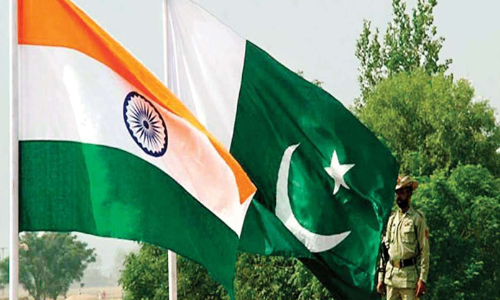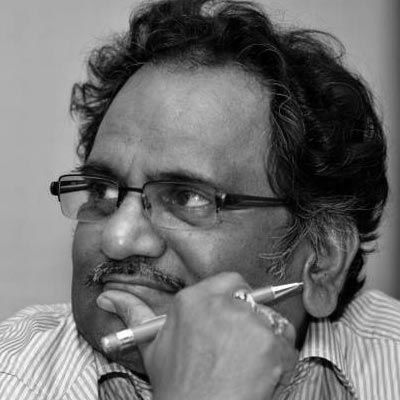Live
- Assam only state to see dip in road accidents: CM Sarma
- MP BJP to celebrate former PM Vajpayee's birth anniversary on Dec 25
- Christmas Eve 2024: Heartwarming Messages To Share With Your Loved Ones
- PM Modi holds brainstorming session with economists in run-up to Budget
- “Telangana Ready to Support AI Technologies That Drive Social Impact,” says Special Chief Secy, Jayesh Ranjan at Woxsen University’s Future Tech Summit 2024
- Hero Motosports Team Rally Announces Squad For Dakar Rally 2025
- Two Men Found Dead In Parked Caravan In Kerala
- Mandhana moves closer to top spot in ODI, T20I rankings
- IND vs AUS Boxing Day Test 2024: Sam Konstas Debuts, Travis Head’s Fitness in Question
- Congress Challenges Election Rule Amendments In Supreme Court
Just In

Yeh Dil Mange More was a catchy ad slogan of yesteryears Perhaps in the present context it changes to yeh media mange war Both in social and mainstream media, with print media being a sane exception, the socalled journalists seem to be obsessed with war
Yeh Dil Mange More… was a catchy ad slogan of yesteryears. Perhaps in the present context it changes to... “yeh media mange war”. Both in social and mainstream media, with print media being a sane exception, the so-called journalists seem to be obsessed with war. The newsrooms became almost ‘war rooms’ and photo morphing or video graphics became daily features for 24x7 news channels in India explaining the need to wage a war with Pakistan to put an end to terrorism and historic hostilities between India and Pakistan besides permanently solving the issue of Kashmir.
It is significant to note that the Ministry of Electronics and Information Technology (MEIT) has directed the search company Google and its video platform YouTube to take down videos related to Wing Commander Abhinandan’s capture by Pakistan on February 26. In fact, the YouTube was asked to remove 11 specific video links which were allegedly potential enough to incite public order and peace in the country. The Minister asked Google to ensure that such videos are taken down. Google was also directed to share compliance report, which it did.
The war in virtual world has already started with social media from two nations battling with each other after surgical strike 2.0. Misinformation and fake news are rampant, fuelling the Indo-Pakistan crisis on almost all major social media platforms. The viewers are finding it difficult to differentiate between fake and genuine visuals that are going viral all over.
Videos from previous air shows or photos of fighter jets are being posted from India and Pakistan, with enthusiastic media personnel and technical experts with misleading titles, false claims indicating that two countries are involved in strikes and counter strikes. The Tweets with hashtags like #BalakotAirStrike, #F16, #SayNoToWar, #Mig21, #PakFakeClaim or #PakistanPM etc are flooding.
To counter Indian media’s (including social media) aggressive stand, the Pakistan increased its aggression over these platforms. This contributed to a lot more panic. Fake news is kicking up hostilities and increasing emotions leading to many joining in war mongering.
Videos of the Wing Commander Abhinandan released by Pakistan soon flooded social media. Initially, a video of him answering questions from Pakistani authorities went viral, followed by other videos of him later drinking tea with the blindfolds off while answering further questions.
The media in India answered Pakistan Army questions about Abhinandan’s family, while he bravely maintained tight-lip amidst adverse situation. There was a massive outcry on social media of both India and Pakistan demanding dignified treatment and swift release of the pilot as per the Geneva Convention which specified the treatment of Prisoners of War (PoW). In fact, netizens of India and Pakistan seemed to come together using common hashtags to fight the increasing hate and irrational war-mongering on both sides.
One positive feature is that while tensions continue to be high, social media has come together in solidarity for Ahinandan's return and to raise its collective voice against hate. Not just India but even in Pakistan, civil society came together to mount anti-war protests across the country, demanding the dignified treatment and release of the captured pilot.
But these voices were either drowned or outnumbered by those who advocated and added to war hysteria. Indian companies such as a burger store reportedly offered discounts in the name of air strike and Indian military success! The stunt drew widespread criticism from people for trying to make money and mockery of war. Political parties also engaged in hashtag wars over Abhinandan's return. Even Pakistan's ruling PTI used social media to slam India after the air strikes in Balakot.
Opposition parties, especially leaders of the Congress and the AAP, who are bitter critics of the BJP, extended open support to whatever decision of the NDA government in the interest of security of nation. This helped in building international pressure on Pakistan besides successfully isolating it in the community of nations on its stand of facilitating terrorists.
But the citizen bloggers or blog journalists who wanted peace and opposed war were bearing the brunt of collective ire of others. They were called anti-nationals for sharing a post that said only Hindu and Islamic fundamentalists were benefited from war while soldiers paid for it with their lives. Google record shows that ‘war’ became one of the most searched terms on that platform.
The unconditional release of Wing Commander Abhinandan by Pakistan has a very positive impact on de-escalating the war tensions between two nations, though the frenzy demands for stern action against the other was increasing.
While social media is agog with overwhelming demand for strong action against terrorism-sponsoring nation, the media controlled by corporate giants after Pulwama attack is busy in generating warlike situation. Though it looks like war mongering, it is in fact hate mongering. The news web portal thewire.in wrote that if the history of these times is finally written, the media’s reprehensible role in creating a climate of hate will find a special mention.
The media took upon itself vakalat for nationals of India, strongly believing that it was fulfilling its national duty, caring a damn for professional norms of journalism. Someone said: “…being a nationalist is a prerequisite to being a journalist.” A different channel offered various methods to bring Pakistan to its knees so that the cancer of terrorism is weeded out. If any participant in these TV debates emphasised the need for ‘peace’, he is shouted out and blamed as anti-national.
In one Telugu channel the anchor dressed up in military uniform and held a toy gun. Some of the journalists who appeared sober are very aggressive on social media. They forgot their basic duty of fact checking. There is a competition among anchors and channels to show off their own patriotic credentials in the name of ‘mood of the nation’. How did they know the nation’s mood?
India has removed most favoured nation tag from Pakistan, but it did not declare it as an enemy. it was not even described as unfriendly nation. Most of the media bashings after Pulwama attack presented who the enemy is and how to be tough with that enemy. They are in tune with the steps, initiatives and strategies of the rulers. Most of these statements might fall in the category of expressions which are against friendly relations with other countries which can be restricted under grounds for imposing reasonable restriction prescribed under Article 19(2) of the Constitution of India.
More than fake news, makers of fake warriors are very dangerous. A comedian described the behaviour of social media aftermath of Pulwama, as ‘performative patriotism’. Whether it is a politician or media person or social media netizen, before they fuel hate or promote war, should join sons in the Army, wait for some time, understand the effects of war and then decide what to do?
(The writer is former Central Information Commissioner and Professor of Law, at Bennett University, Greater Noida)

© 2024 Hyderabad Media House Limited/The Hans India. All rights reserved. Powered by hocalwire.com







